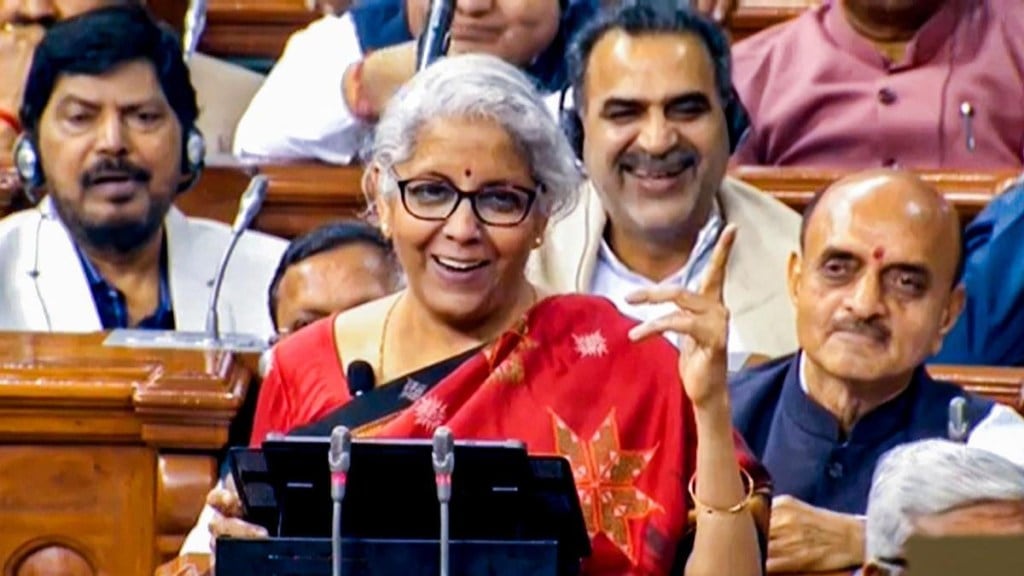By Jiji Mammen,
Union finance minister Nirmala Sitharaman, in her Interim Budget speech for FY25 said that, “Eighty-three lakh SHGs with nine crore women are transforming rural socio-economic landscape with empowerment and self-reliance. Their success has assisted nearly one crore women to become Lakhpati Didi already. They are an inspiration to others. Their achievements will be recognized through honouring them. Buoyed by the success, it has been decided to enhance the target for Lakhpati Didi from 2 crore to 3 crore.”
This was an important announcement as far as rural economy and women empowerment is concerned. The SHG Bank linkage programme was initiated by NABARD in 1992 and it was subsequently adopted by the government of India for their poverty alleviation programmes. Examples include the Swaran Jayanti Grama Swarasgar Yojana (SGSY) and its new version—National Rural Livelihood Mission (NRLM), later rechristened as Deendayal Antodaya Yojana.
The programme has been successful in mobilising poor women and linking them to banks through self help groups (SHGs). As on March 31, 2023, more than 69 lakh groups with more than nine crore women, linked to various banks, have obtained loans to the tune of `1.88 trillion. Today, this figure could be anywhere around `2.20 trillion. Thus, in the last 30 years, the programme has benefitted millions of poor women by enabling them to be socially mobilie and has helped them in getting some financial assistance to set up various kinds of livelihood activities.
The programme has been more or less stabilised and stagnated with more social mobilisation activities and some extent of enterprise development support.
It is true that millions of women and their households have been beneficiaries of the programme to some extent, but it never took shape beyond a financial inclusion programme till the Lakhpati Didi scheme by the Centre was announced a few months back. Today, per the announcement of the finance minister, one crore women have benefited from the scheme and have been able to expand their business activities, becoming lakhpati didis. Hence, the announcement to expand the programme to cover 3 core women makes sense.
The Lakhpati Didi programme is an effort to support the women from SHGs who have been linked to banks to take up smaller ventures, which will give them sufficient income to have a surplus of about `1 lakh in a year.
It will be possible with less efforts to upgrade the existing livelihood activities of the women who have started something with SHG support. Others also need to be supported to take up bigger enterprises.
Sa-Dhan has received support from two quarters to support poor women in taking part in this programme—from the Small Industries Development Bank and the Bill and Melinda Gates Foundation (BMGF). While the former is open to all kind of women in the lower strata, the latter is aligning with NRLM and SRLMs, the State Level livelihood Missions of seven states in the country.
How easy is this task of developing 3 crore Lakhpati Didis? It is a challenging one, considering the background of the beneficiary women as well as the fact that they are first-time entrepreneurs. Hence, proper selection of beneficiaries, along with capacity-building and hand-holding is necessary.
Corporates, especially with their CSR funds, can definitely play an important role for this. Training, mentoring, and hand-holding are the three major success mantras for this programme.
Another task is to bring the bankers and lenders around to this idea. Presently, banks are comfortable lending to poor women through SHGs. The Lakhpati Didi programme will have to be supported outside the group mode, and mostly through individual loans. There are few banks like State Bank of India which have formulated separate schemes for this.
Other banks may also need to join in on the same. The government can also come forward to provide comfort to the lenders with Guarantee Funds. If these are undertaken, we can see women in our society contributing immensely to the wellbeing of their households and the economy.
The author is ED and CEO, Sa-Dhan. Views expressed are personal.
